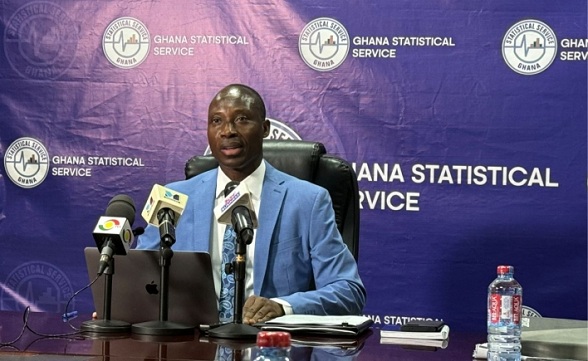Ghana has unveiled a new, more frequent measure of its economic heartbeat, with the inaugural Monthly Indicator of Economic Growth (MIEG) revealing a 4.5 per cent year-on-year expansion for July 2025.
The new index, launched by the Ghana Statistical Service (GSS), is designed to bridge the gap between quarterly GDP figures, offering policymakers and investors a timelier gauge of economic trends.
The data shows the economy maintained its upward trajectory, with the MIEG index climbing to 110.2, up from 105.4 in the same month last year.
However, the latest growth figure indicates a noticeable cooling from the 8.3 per cent pace recorded in July 2024. The expansion was driven by a resurgent agricultural sector, which saw growth accelerate to 8.0 per cent, and a steady services sector, which grew by 6.4 per cent.
In contrast, the industrial sector barely expanded, registering a marginal 0.1% increase.
The Government Statistician, Dr. Alhassan Iddrisu, presented the findings, stating the MIEG provides "timely insights to support swift and evidence-based policy responses."
He explained that the new indicator is a "leading high-frequency indicator of GDP growth" that will help monitor the impact of policy interventions and improve the forecasting of economic activity.
The sectoral breakdown shows services were the largest contributor to the overall growth, accounting for 2.63 percentage points of the 4.5 per cent total. Agriculture contributed 1.67 percentage points, while the subdued industrial sector added just 0.04. The GSS noted that while industrial gold production saw an increase, this was largely offset by a decline in petroleum and gas output.
The MIEG, which uses a baseline of 100 for the reference year 2023, is provisional and will be subject to revision as more comprehensive data becomes available. The GSS will follow a release schedule, with the next update for August 2025 due on 12th November.
Graphic





